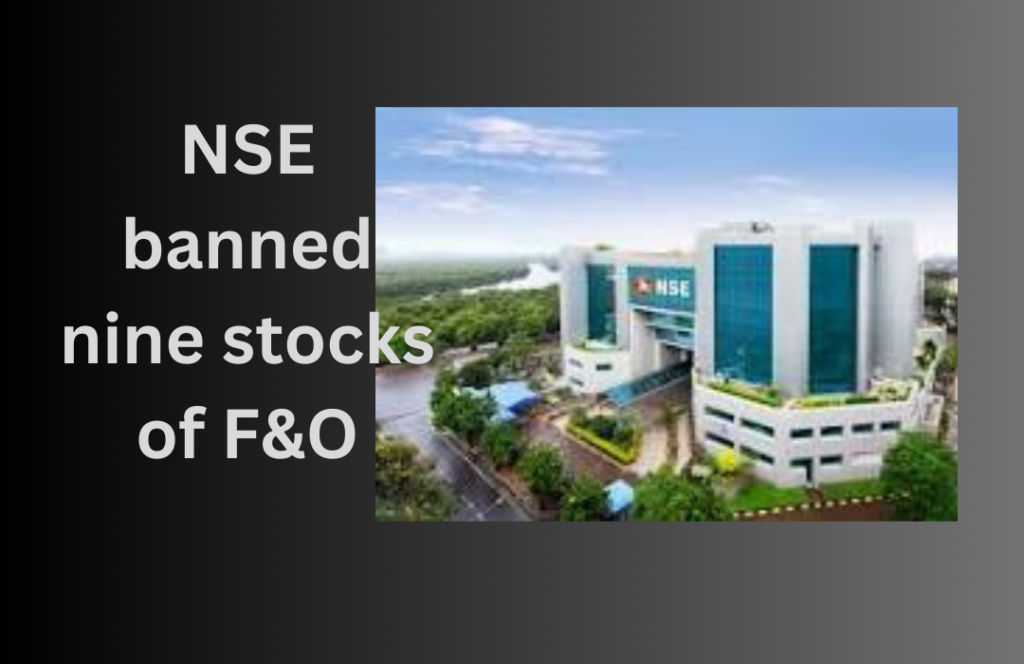As of January 24, 2025, the National Stock Exchange (NSE) has placed the following nine stocks under futures and options (F&O) restrictions:
1. Aditya Birla Fashion & Retail
A leading player in India’s branded fashion sector with renowned brands like Louis Philippe, Van Heusen, Pantaloons, and Forever 21. Known for innovation, sustainability, and digital integration, ABFRL targets a broad demographic through its diverse product range.
2. Bandhan Bank
Founded in 2015, Bandhan Bank is an Indian banking and financial services company specializing in microfinance and retail banking. It primarily serves underbanked and unbanked regions, focusing on financial inclusion and small enterprises.
3. Can Fin Homes
A housing finance company offering affordable housing loans and other mortgage products. Established in 1987, Can Fin Homes focuses on providing accessible home financing solutions to individuals and families across India.
4. Dixon Technologies
India’s largest electronics manufacturing services company. Dixon manufactures a range of electronic products, including LED TVs, mobile phones, washing machines, and lighting products, and collaborates with global brands for OEM/ODM services.
5. IndiaMART Intermes
NSE India’s largest online B2B marketplace connecting buyers and suppliers. It offers a wide array of products and services, helping businesses enhance their reach through digital platforms
6. L&T Finance
A subsidiary of Larsen & Toubro, it provides financial products and services, including infrastructure financing, rural finance, and housing finance. It is a key player in supporting India’s infrastructure growth.
7. Manappuram Finance
A leading non-banking financial company (NBFC) specializing in gold loans. It also offers microfinance, housing finance, and insurance services, leveraging its strong network in rural and semi-urban areas.
8. Mahanagar Gas
A natural gas distribution company catering to Mumbai and its surrounding areas. It provides piped natural gas (PNG) for households, industries, and compressed natural gas (CNG) for vehicles.
9. Punjab National Bank
NSE,One of India’s largest public sector banks, offering a wide range of banking and financial services. With a vast network of branches and ATMs, PNB focuses on retail banking, corporate banking, and rural banking services.
Reason for F&O ban:
- Market-wide position limit (MWPL):
MWPL is the total number of contracts (open interest) that can be held for a stock in the F&O segment across all exchanges.
When the combined open interest in a stock across all F&O contracts exceeds 95% of the MWPL, the stock is put on the F&O ban list.
- Purpose of the ban:
To prevent excessive speculation and ensure stability in the market.
It aims to reduce the risk of price manipulation and protect the interests of investors.
- During the ban:
Traders cannot initiate new F&O positions in the stock.
They are only allowed to reduce their existing positions by offsetting trades.
- Removal of ban:
When the open interest falls below 80% of the MWPL, the ban is lifted.
Implications for traders:
Higher volatility: Stocks under F&O ban often exhibit increased price volatility.
Focus on cash market: Investors and traders can focus their attention on the cash segment of these stocks.
Restricted trading: Restricted trading activity in the F&O segment may impact liquidity and short-term trading strategies.
This mechanism ensures disciplined trading and protects the market against excessive speculation. Always monitor the daily F&O ban list to stay informed.
These securities have been restricted in the F&O segment as their open interest has exceeded 95% of the market-wide position limit (MWPL). MWPL indicates the maximum number of contracts that can be opened at any point of time for a particular security. When this limit is exceeded, NSE imposes restrictions to prevent excessive speculation and maintain market integrity.- NSE India
During the restriction period, traders are only allowed to reduce their existing positions through offsetting trades; initiating new positions is prohibited. The restriction is lifted when the open interest falls below 80% of MWPL. It is important to note that despite F&O trading being restricted, these stocks remain available for trading in the cash market- NSE India.
Investors and traders should be cautious and monitor the F&O ban list daily, as stocks included in this list tend to be more volatile. Staying informed about such developments is important for making good financial decisions- NSE India.

